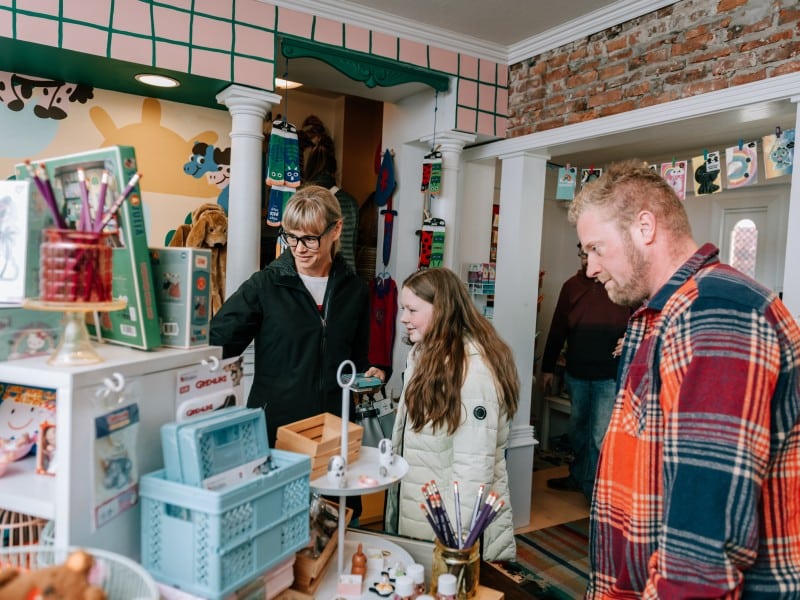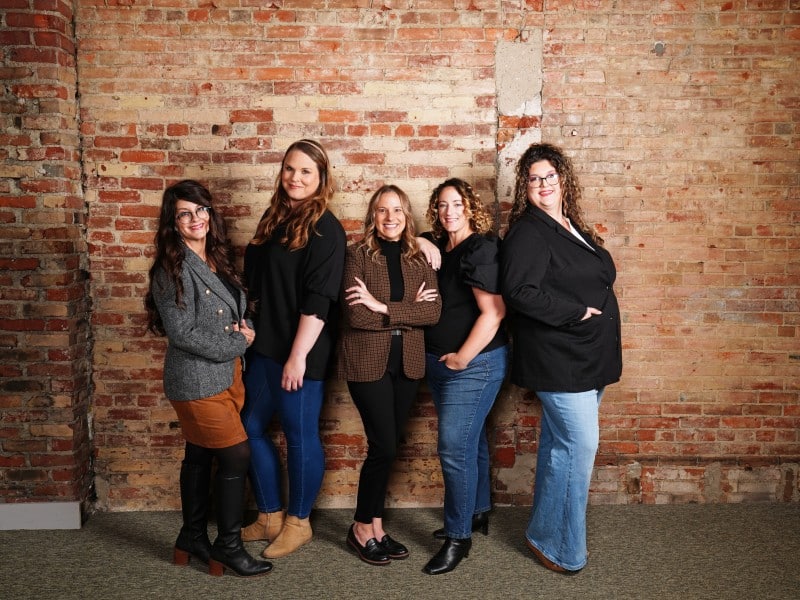‘We see you, and we see good in you’: Southeast Fort Wayne residents share hopes for the community
Reflecting on Southeast Fort Wayne’s past, present, and future, residents share challenges and opportunities they see.
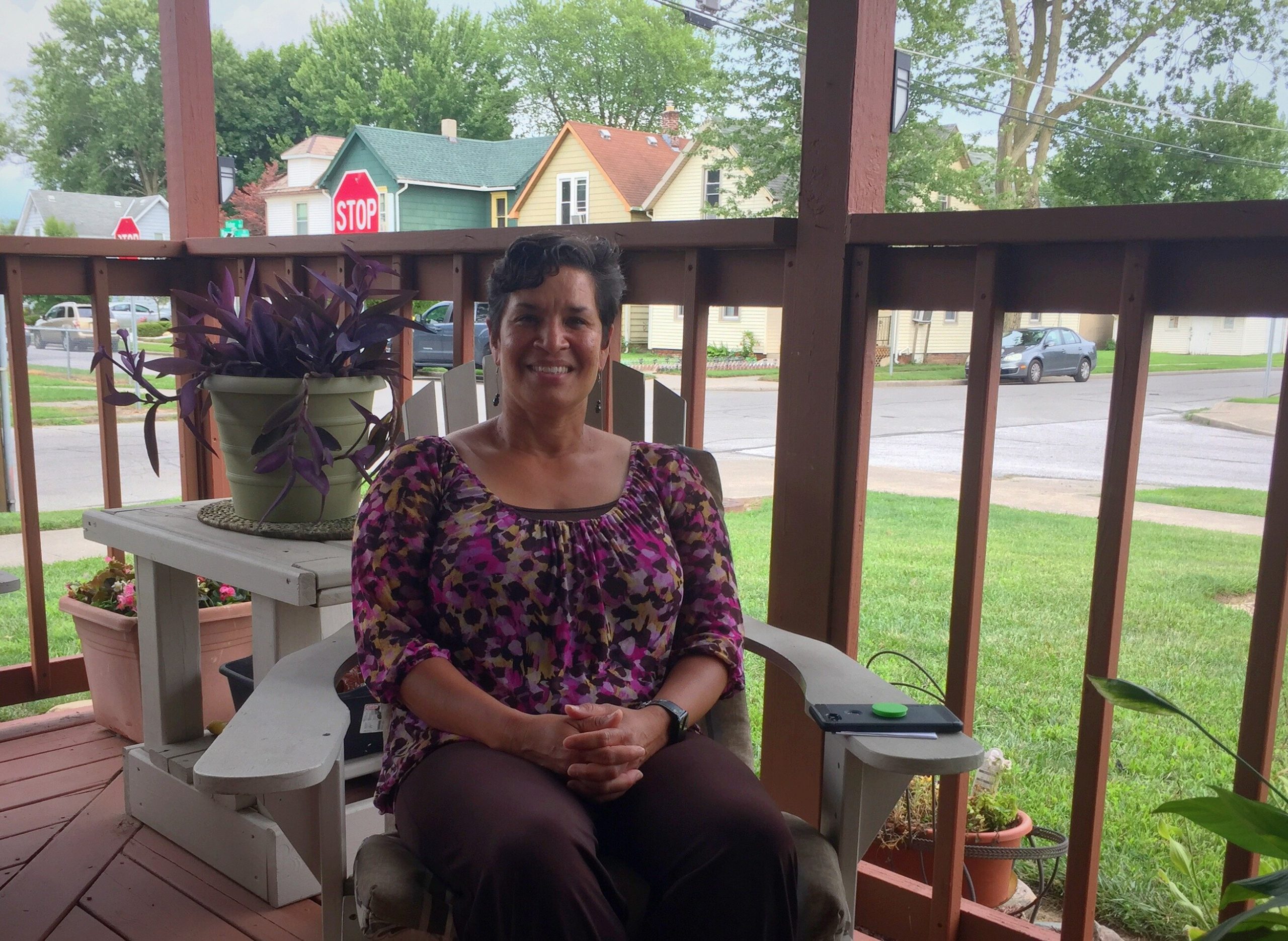
Rebecca Ridley grew up in the East Central neighborhood of Southeast Fort Wayne.
Her family moved into a house on McCulloch Street when she was a baby 55 years ago, and her mother still lives there today.
“It was a place where people knew each other,” Ridley recalls.
She remembers walking down the street to McCulloch School and hanging out at the Jennings Center, where kids of all ages gathered to make crafts and play games.
“All of the action happened there,” Ridley says. “There was no staying home and watching TV. Being in that community, your neighbors shaped you. They had input on who you were and what you felt about yourself.”

Growing up in Southeast, Ridley always felt supported and safe—the same way she feels today sitting on her porch in the Renaissance Pointe neighborhood only a few blocks away from her childhood home.
As she talks, children play on the basketball courts and swings at Bowser Park across the street. The activity reminds her of the power of community. Some nights, she calls out to the kids at the park, giving them advice or asking them to quiet down. It’s all a part of being neighbors and sharing space, she says. After all, it takes a village to raise children, and in many ways, the kids of the neighborhood are her kids, too.
The park they’re playing in has taken up special significance in Ridley’s life, as well.

Its namesake, Sylvanus Freelove Bowser, was once a Fort Wayne inventor and investor who believed in the Southeast side of town and worked hard to create beautiful spaces for its people—evidenced in the intricate churches in the area and relics like a massive boulder engraved as a marker in the corner of the park.
“Who does that for a park?” Ridley asks, pointing to the impressive, imperial signage.
Bowser built things in the Southeast quadrant that were made to last.
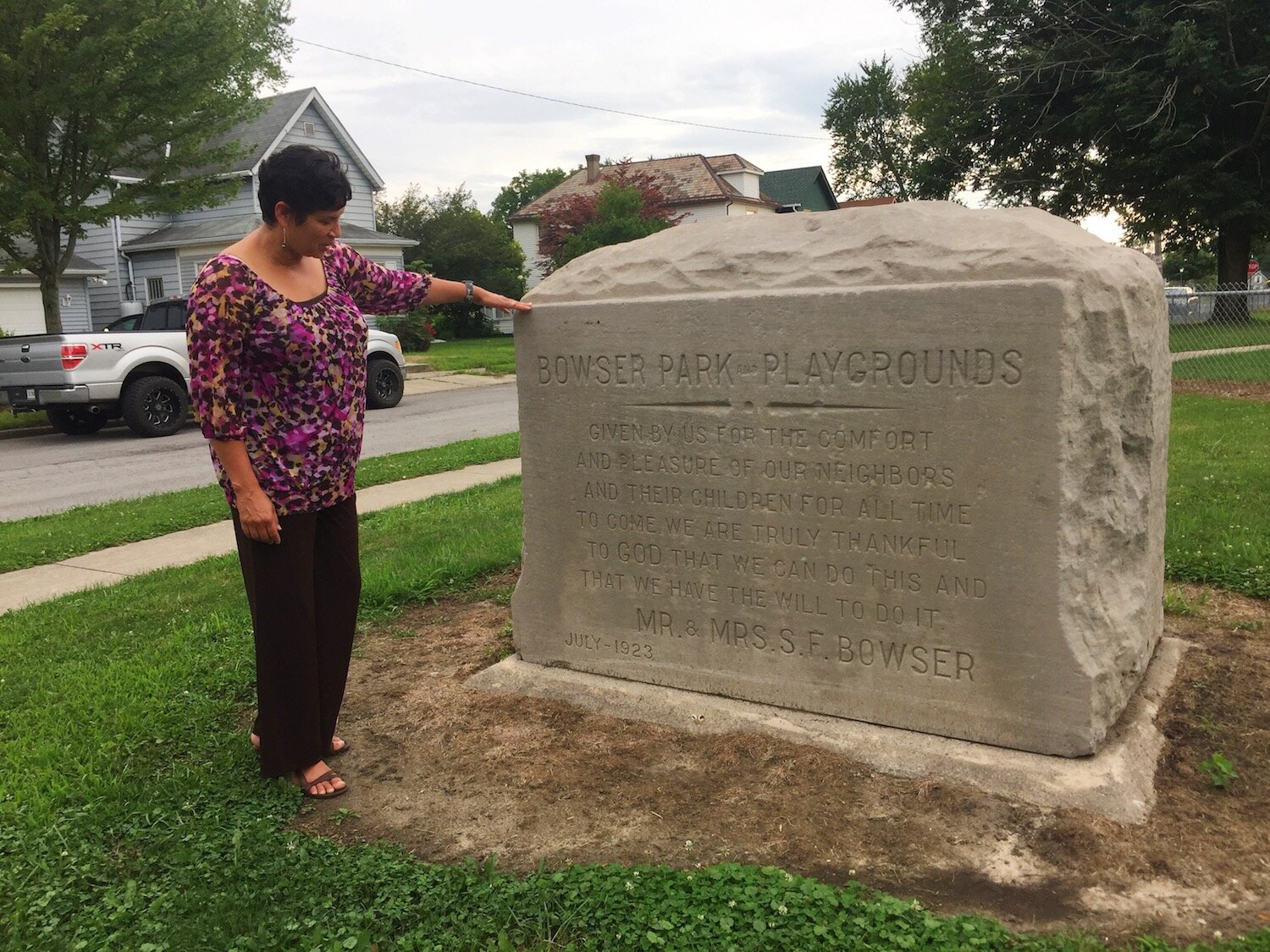
It was the intricate churches around the Renaissance Pointe neighborhood that first caught Ridley’s eye when she moved there. She had left Fort Wayne in the 1980s around the same time the large employer International Harvester left the area, taking with it many jobs and economic opportunities.
“The Rust Belt effect hadn’t really taken hold yet when I left,” Ridley says. “But when I came back about 20 years later, everything had changed on the South side of town.”
Ridley was shocked to see the neighborhoods she knew and loved in Southeast looking rundown and in disrepair when she moved back to the city. But she was going through a divorce and busy raising her children, so she didn’t have much time to process the changes.
Later in life, when she met her now-husband Tony Ridley and moved into his house in Renaissance Pointe in 2010, things started to slow down, and she began to take stock of her surroundings.
“I actually got to look around and notice things,” she says.
When she looked around Renaissance Pointe, she noticed a lot of intricate, historic churches that stood in stark contrast to the area around them.
“One day, I started counting the churches as I walked, and I kept thinking, ‘There’s no big businesses here, but it costs money to build these churches,’” Ridley says. “That sent me asking questions.”

Applying her skills working in the technology department of Fort Wayne Community Schools, she started researching to learn about the churches. In the process, she learned that many of the churches in Southeast were tied to booming businesses of the early- to mid-1900s. And many of these businesses were tied to inventors, like television creator Philo T. Farnsworth, who brought his company to Fort Wayne and began manufacturing the world’s first mass-produced televisions here in the 1940s.
“It was fascinating,” Ridley says. “The more I read, the more I was blown away by how many things were literally created in Fort Wayne.”
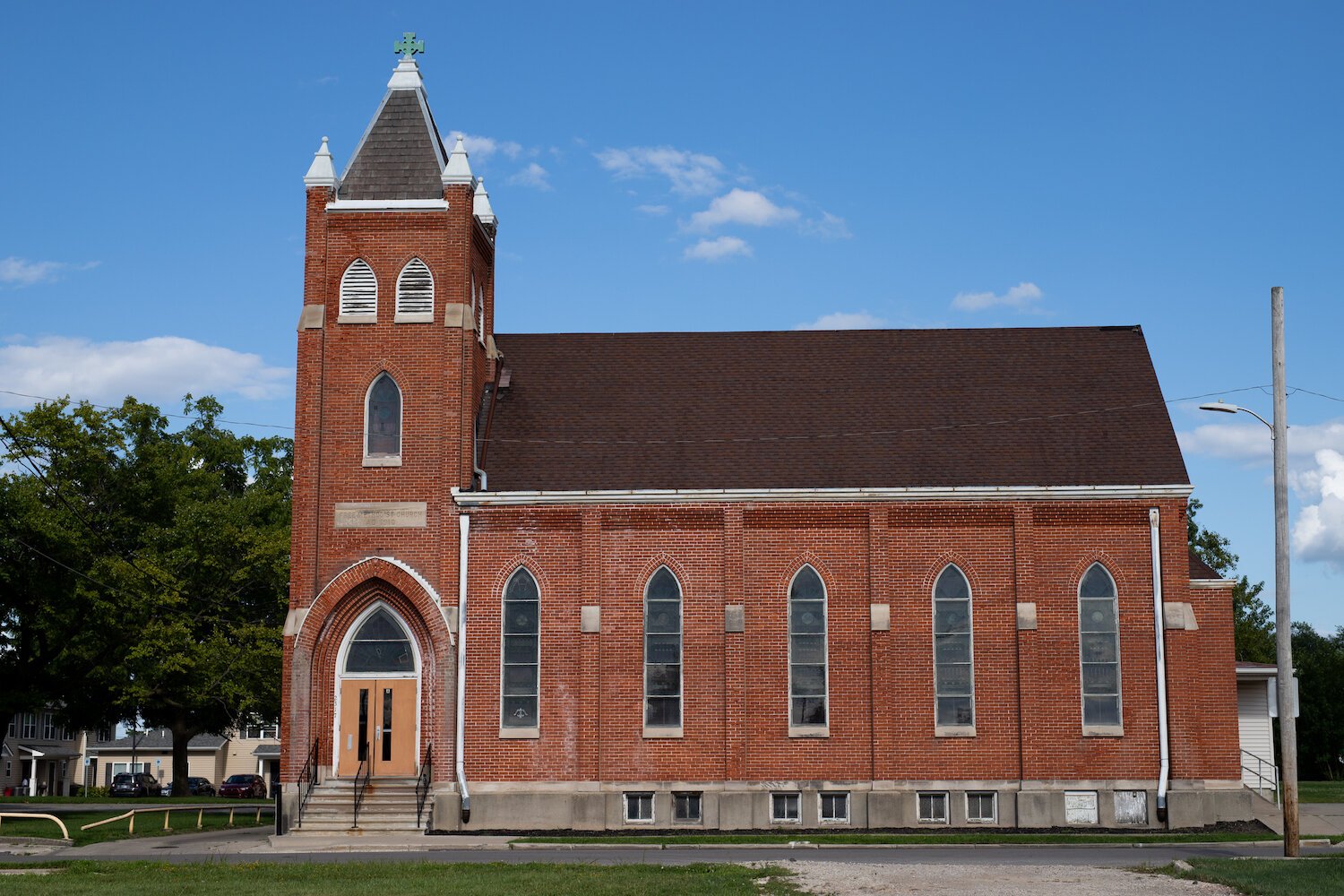
The most interesting inventor Ridley came across was Bowser who ended up creating the first “self-measuring” pump in Southeast Fort Wayne in 1885. Bowser was a humble salesman at the time, just trying to get water out of a frozen well for his family. But his invention happened to come at the same time Ford was making automobiles more affordable, and self-measuring pumps were convenient for gas. So in a true rags-to-riches story, Bowser’s business boomed in Southeast Fort Wayne.
“It was just the right thing at the right time,” Ridley says.
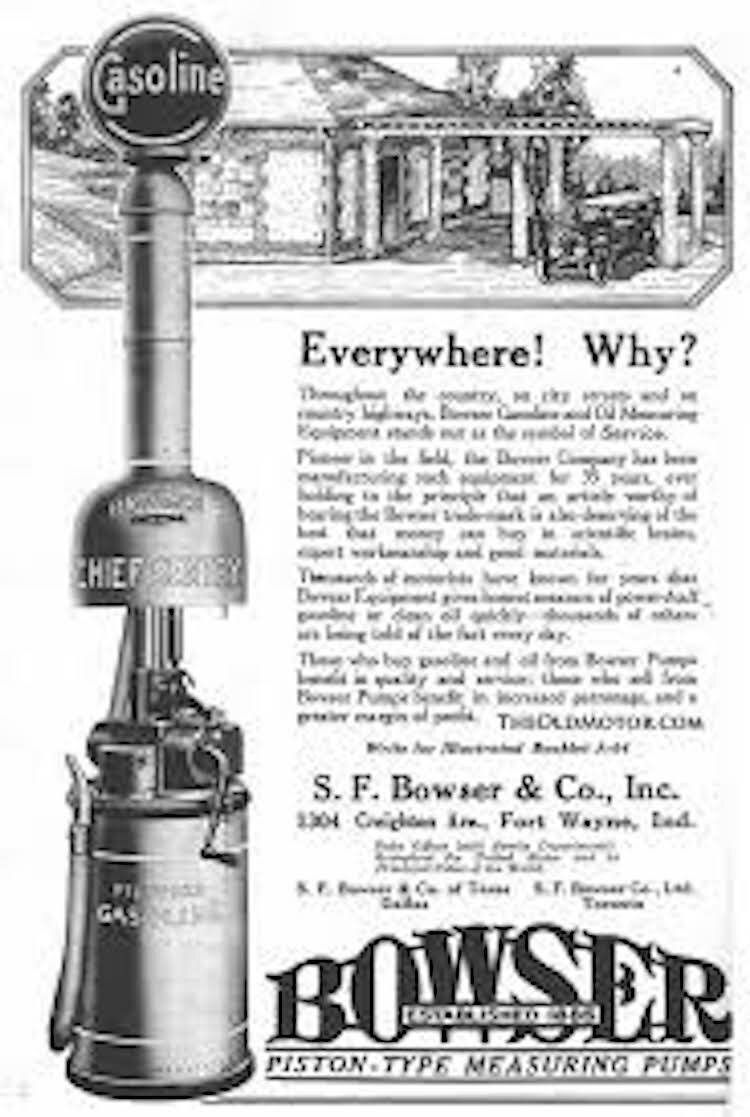
From the late 1800s to the early 1900s, Bowser became one of the chief manufacturers of gasoline pumps in the U.S. and even exported pumps worldwide, hiring as many as 1,200 workers at his Southeast Fort Wayne headquarters. In many ways, his factory that stretched two blocks along the east side of now-Bowser Avenue just south of Creighton helped designate the area as an industrial hub, attracting the competition of other major U.S. gasoline pump manufacturers, who moved to the city, like Tokheim Corporation.
Along with building up business in the area, Bowser also invested in the wellbeing of his people. In 1919, he formed the Bowser Loan and Trust Company to provide low-interest loans to his employees so they could purchase homes in the area, according to the City’s Historic Preservation Planner Creager Smith. Bowser also built a beautiful headquarters for his business in the neighborhood, and he himself lived in the area. He established Bowser Park for his workers and their families, too.
As such, the modern Renaissance Pointe area became known as “Bowserville” for a period of time, Ridley explains.
“Bowser spent most of his life poor, so he was generous with his money and wanting to help people,” she says. “A lot of the people who made money here were very good to their workers because they didn’t come from money themselves, so they were more willing to invest in neighborhoods.”
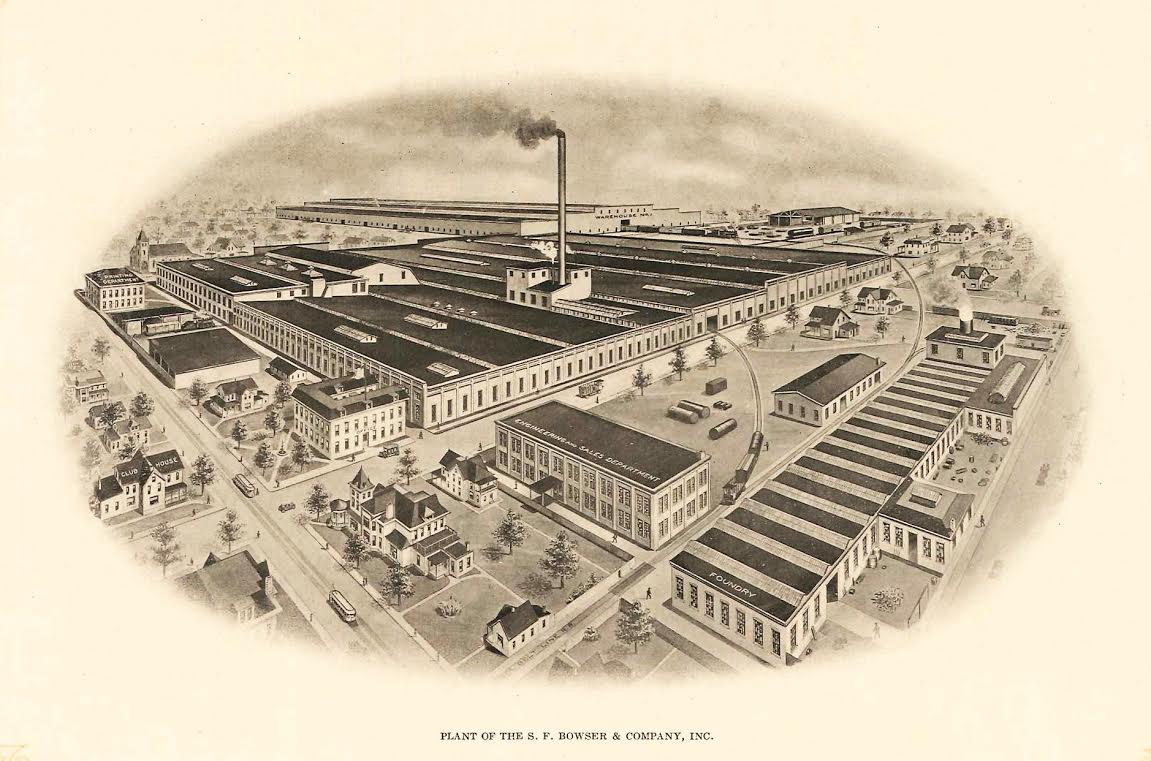
Unfortunately, Bowser was a better inventor than he was a businessman. His empire collapsed in the 1930s Depression-era, and the company relocated out of town. His impressive headquarters building for the S.F. Bowser Company dating back to 1917 was repurposed as a headquarters for the Fort Wayne Police Department before it was demolished in 2017.
Ridley says she got to tour the building once before it was torn down. She even tried to save it for a while. But it was in bad shape, and there was no one willing to put in the time and money to fix it. Even if they did, what type of large business would locate there? She muses.
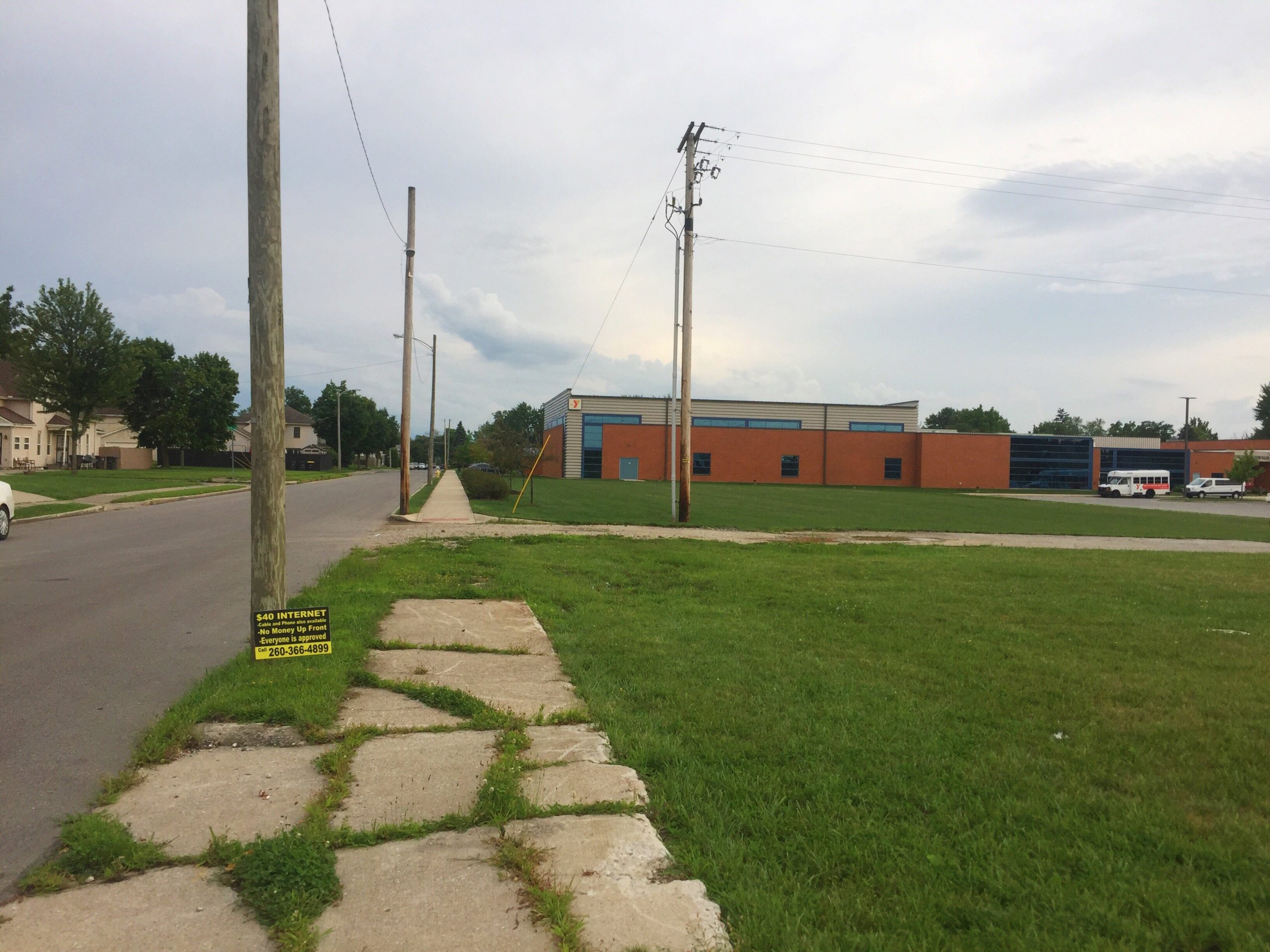
That’s the catch-22 of living in an underserved part of town, Ridley says. The Southeast side needs more local businesses and amenities, like grocery stores, to support its population. But at the same time, she’s seen efforts, like pop up shops, that have tried to get going in the area and don’t find enough customer support.
“It’s a hard thing,” she says. “Businesses want a steady profit, but if people here don’t earn enough money, how can we support them?”
It’s a vicious cycle.
Ridley says she’s inspired by local organizations, like Joshua’s Hand, pushing back against the stereotypes about the Southeast quadrant and working to break destructive cycles that hold the community back.
She’s inspired by projects like Bottle Works Lofts, repurposing the old Coca-Cola Plant into affordable housing, and community gathering spaces, like the Renaissance Pointe YMCA, which help residents access important resources.

Before COVID-19, Ridley attended an event at the YMCA, which made her aware of many programs for early childhood learning and reading services in Fort Wayne. She believes investing in the youth will be a big part in advancing Southeast’s future. In an era of mass incarceration of black and brown men, young black and brown children need the support of caring adults in their community to contribute to raising them.
“I love that we have places, like the YMCA or Boys & Girls Club, telling kids here, ‘We see you, and we see good in you,” Ridley says.
In a way, it’s the same message she received growing up in Southeast—and the same message Bowser gave his employees when he invested in their lives beyond work.
We see you, and we see good in you.
It’s a message that doesn’t get told to Southeast Fort Wayne often enough.
***
As the publisher of El Mexicano News, Fernando Zapari is often seen as a leader in the Fort Wayne community—a voice of the city’s Hispanic and Latino populations.
But when people meet him, they sometimes ask: “Why do you still live in Southeast?”
His response is always that he cannot imagine living anywhere else—in Fort Wayne or beyond.
“I love it here,” Zapari says. “If I could ever manage to build a million-dollar home, guess where I would build it? Right where I’m at.”

He says part of the reason he would want to build a mansion in Southeast is so that youth in the area would know that successful business people can stay there and thrive. They don’t need to leave the community that raised them.
“It would tell them that they could dream,” Zapari says.
While it’s not a million-dollar mansion, his current dream house is the home he shares with his wife in the 5700 block of Winter Street. It’s where they’ve lived for the past 20 years and raised their four children who are now grown and working in the Fort Wayne area.
As an immigrant from Mexico himself, Zapari says one of the things he appreciates most about the Southeast side of town is how diverse and welcoming the community is of different cultures. His next-door neighbors are Burmese, and they frequently share food with him and invite him to meals. His neighbors across the street are from Guatemala and Mexico.
“Everybody here is wonderful,” Zapari says, noting that he’s never felt threatened by anyone on the Southeast side since he moved there in 1978.
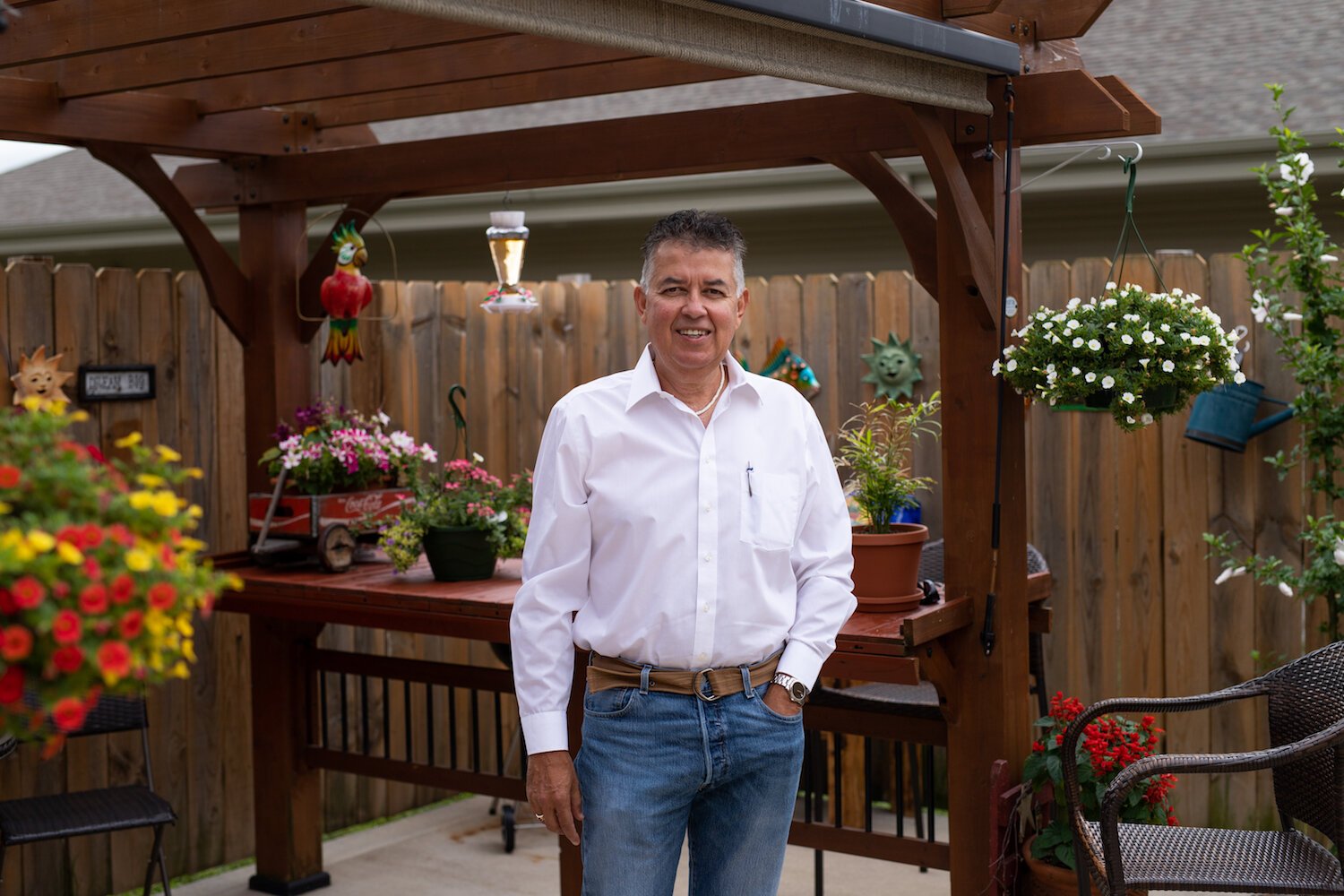
He feels that many of the challenges the Southeast side faces today with crime are due to systemic and structural barriers, including a lack of support and entertainment for youth in the area.
“We need to step up to the plate to help these young people,” he says.
In many ways, he believes challenges on the Southeast side would diminish if people in the community had more access to wealth-building jobs and community-building amenities. Well-paying jobs can give parents the luxury of free time to spend with their children instead of putting in long hours for low paying work. Amenities can provide entertainment and inspiration that keeps kids off the streets, too.
“We need more than Walmarts and Taco Bells,” Zapari says. “We need an infusion of local business.”

While he says that he supports Mayor Tom Henry and the efforts the City has made to advance the Southeast quadrant so far, the area is still noticeably lacking amenities and infrastructure compared to other parts of town. Southeast still needs more attention and resources to thrive with the rest of Fort Wayne. Many times, when windows are broken or buildings aren’t taken care of on the Southeast side, they sit in disrepair for long periods of time before they are fixed.
But these challenges don’t dismay Zapari about the place he knows and loves. Instead, they’re reasons to keep pressing in, keep serving his community, and keep adapting with the times, much like he does in his work for El Mexicano News.
When Zapari first moved to Fort Wayne, he only spoke Spanish, so he took a number of odd jobs around town before he found his passion in the news industry. As the son of a sports columnist in Mexico, he grew up reading every newspaper he could get his hands on. He even learned English in Fort Wayne, in part, by reading the Journal Gazette.
But as he got to know the city’s news sources better, he found himself craving more news about the local Hispanic and Latino communities, as well as some news from his Mother country.
Working with the publisher of the now-defunct Frost Illustrated Michael Patterson, Zapari learned how to use a computer and create a community newspaper of his own. He launched El Mexicano News in 1994 with a circulation of 2,000 papers across the Northeast Indiana region.
“Our mission is to inform folks of the resources available to them in our community and promote higher education for all,” Zapari says.

Over the years, El Mexicano’s circulation grew to 10,000 at its peak, before the publishing industry shifted to favor websites and social media. Today, Zapari and his wife still publish El Mexicano monthly and deliver about 6,000 print copies to various pickup sites across the region.
Watching the changing seasons from the window of their 12-passenger delivery van, they drive as far away as Ligonier and LaGrange to bring loyal readers their news.
“We consider it a mini-vacation every month,” he says.
But while he appreciates the beauty of Northeast Indiana’s rural landscapes and interesting towns in his monthly travels, running a print newspaper in the digital age has been no easy task, even before COVID-19 began, Zapari says.
For a few years now, he’s considered moving El Mexicano online only, but he says they’re not quite ready for that yet. They have about 9,000 followers on Facebook, and in addition to the publication, they run the online Spanish radio station. During COVID-19, El Mexicano has been publishing web videos on social media with success, too, he notes.
But keeping the paper afloat requires a commitment to addressing challenging situations in an ever-changing world. It’s this spirit of persistence that could benefit Fort Wayne as it invests in Southeast, too.
When it comes down to his hopes for the area, Zapari says education is key, particularly for the advancement of youth. He also hopes people don’t blindly follow the money when it comes to where they choose to live, work, and invest.
“Don’t follow the dollar signs,” Zapari says.
After all, there are things in life that are more valuable than money.
***
For many years, Javier Mondragon has believed in the power of living where you work and serve, getting to know the people and community on a street-level.
It’s a belief he’s living out as the pastor of Many Nations Church and founder of Bridge of Grace Compassionate Ministries Center in the Mount Vernon Park neighborhood. In 2008, Mondragon moved into a small house next-door to his church—a community where 57.4 percent of residents earn $25,000 or less per year, 89 percent are people of color, and 46 percent are under age 25.
As an immigrant from Mexico who grew up in a low-income part of town, Mondragon was eager to serve youth in Fort Wayne facing similar economic circumstances.

When it comes to income and race, many demographics in Southeast have resulted from redlining in the city’s past and declining investment in the area since large employers like Harvester left the community in the 1980s.
When Mondragon moved into Mount Vernon Park, his neighborhood was largely in disrepair with many houses falling apart. To direct his ministry’s work, his staff went door-to-door, asking residents how they could serve the community. Many neighbors said they simply wanted to feel safe where they lived, and they wanted to see their neighborhood beautified. They wanted more places to come together in the neighborhood.

As such, Many Nations Church stepped up to meet these needs, founding the nonprofit Bridge of Grace Compassionate Ministries Center in 2011.
In the last decade, Bridge of Grace has acquired several houses in the Mount Vernon Park neighborhood, bringing in contractors and volunteers to get them up to code. It has cleaned up trash around the area and worked with youth in its programs like Tired-A-Lot, which transforms vacant lots into vibrant community playgrounds using recycled materials. It’s even started coordinating and hosting Mount Vernon Park’s neighborhood association meetings, inviting residents to share their thoughts, concerns, and dreams for the community.

These efforts are yielding results, too. Since 2013, crime in Mount Vernon Park neighborhood has decreased by about 55 percent, according to FBI Uniform Crime statistics from the Fort Wayne Police Department.
But safety, beauty, and connection are only part of the puzzle when it comes to helping underserved neighborhoods thrive, Mondragon says. As his team has made progress on revitalizing the area, it’s become increasingly important for them to focus on attracting investors to Southeast, too.
“The next step is economic development,” Mondragon says. “Now that people feel good about their neighborhood, we need to get well-paying jobs to come here.”

Since many residents in the Southeast area don’t have personal automobiles and there aren’t many well-paying jobs near home, transportation challenges can create barriers to employment and advancement for residents. As such, it’s been Mondragon’s goal to get more employers to consider locating in Southeast, not only to boost the area with foot traffic and economic revenue, but also to provide wealth-building opportunities to residents.
In 2013, Bridge of Grace’s work caught the attention of the late-Ian Rolland of Lincoln National Corporation, who helped Mondragon woo other big-name investors, like Chuck Surack and Rick James, to start visiting the Mount Vernon Park area, too.
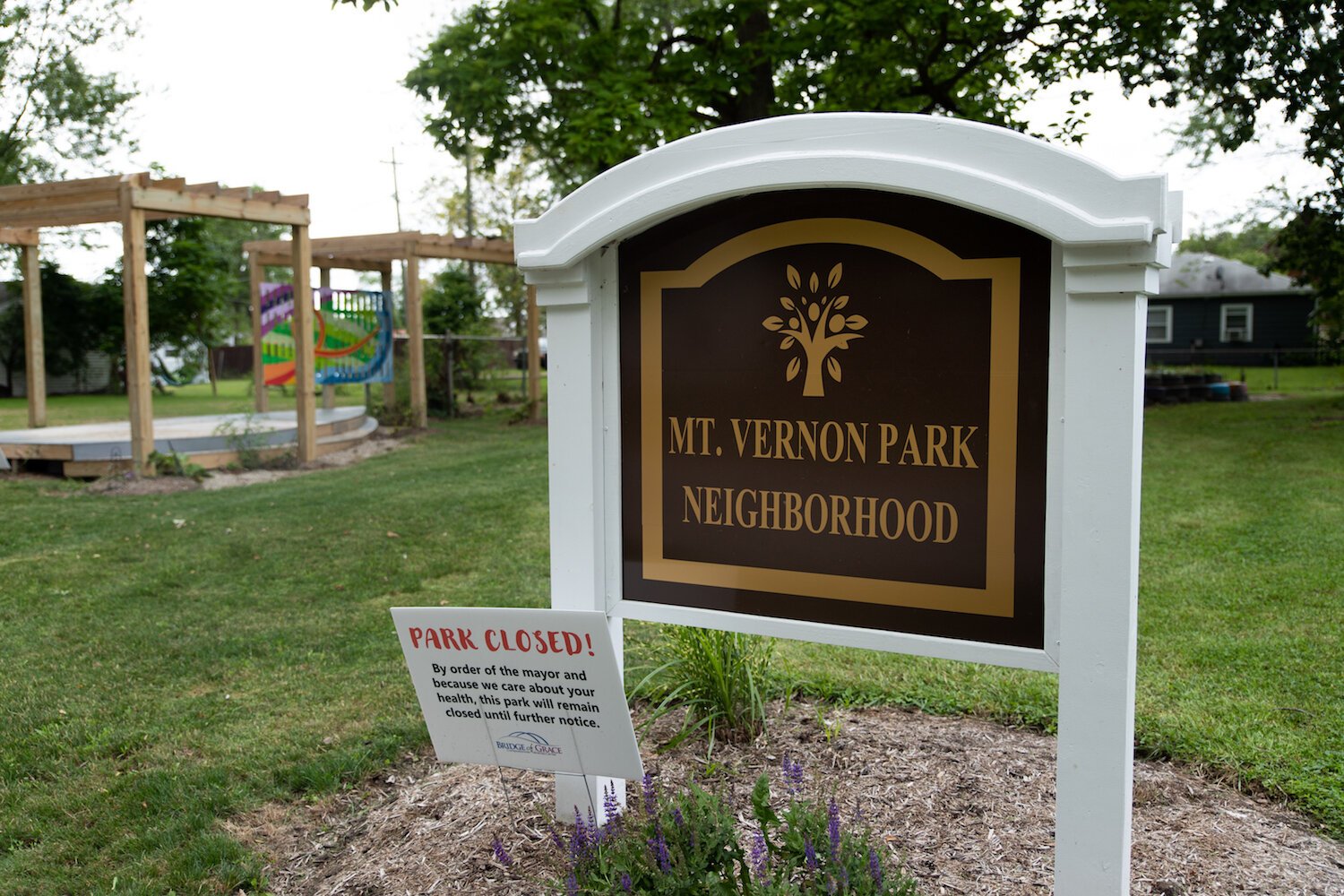
As each investor came to the neighborhood, Mondragon gave them walking tours, showing them the revitalized housing and community development there.
“We wanted them to see exactly where we are located and what type of work we’re doing,” Mondragon says. “We wanted them to walk and drive this neighborhood, so they have a sense and feeling of who we are.”
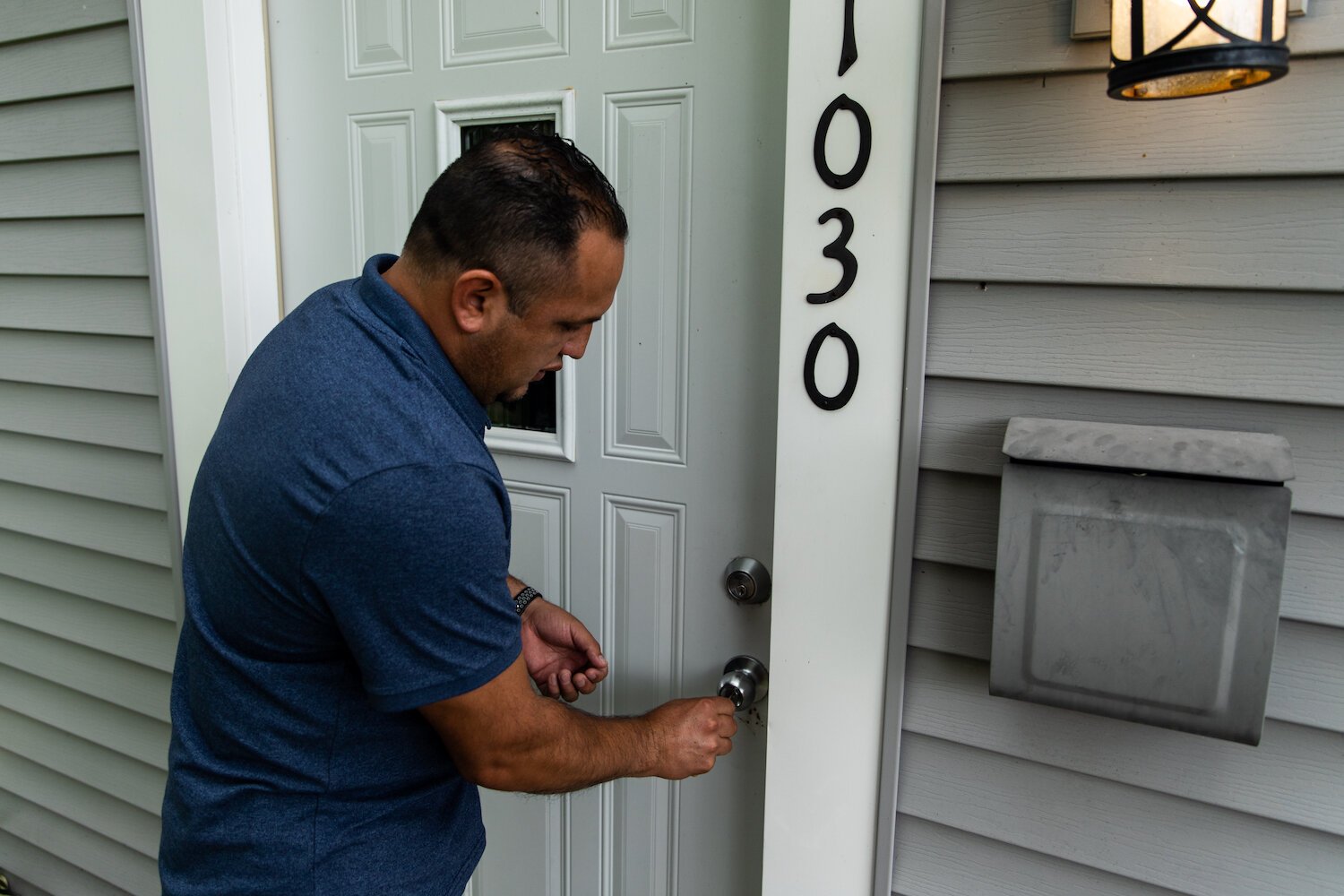
One investor who came to Mount Vernon Park to meet with Mondragon in 2017 was Scott Glaze of Fort Wayne Metals.
Mondragon says he met with Glaze at Bridge of Grace first and told him about their work, but it wasn’t until Glaze walked the neighborhood and saw some of the housing projects himself that he got excited about the power of investing in Southeast.
“I remember he walked into a house where some of our contractors and volunteers were working, and that’s when his eyes got wide open,” Mondragon says.

This powerful, firsthand experience of seeing progress in Mount Vernon Park is part of what convinced Glaze to move one of his companies to the Southeast side—and commenced nearly two years of communication with Mondragon to make it happen.
After searching for the right space and seeking Mondragon’s input, Glaze purchased a dilapidated and foreclosed building at 6901 S. Hanna St., which once housed Mr. Wiggs department store, a flea market, and the Fort Wayne Christian Center.
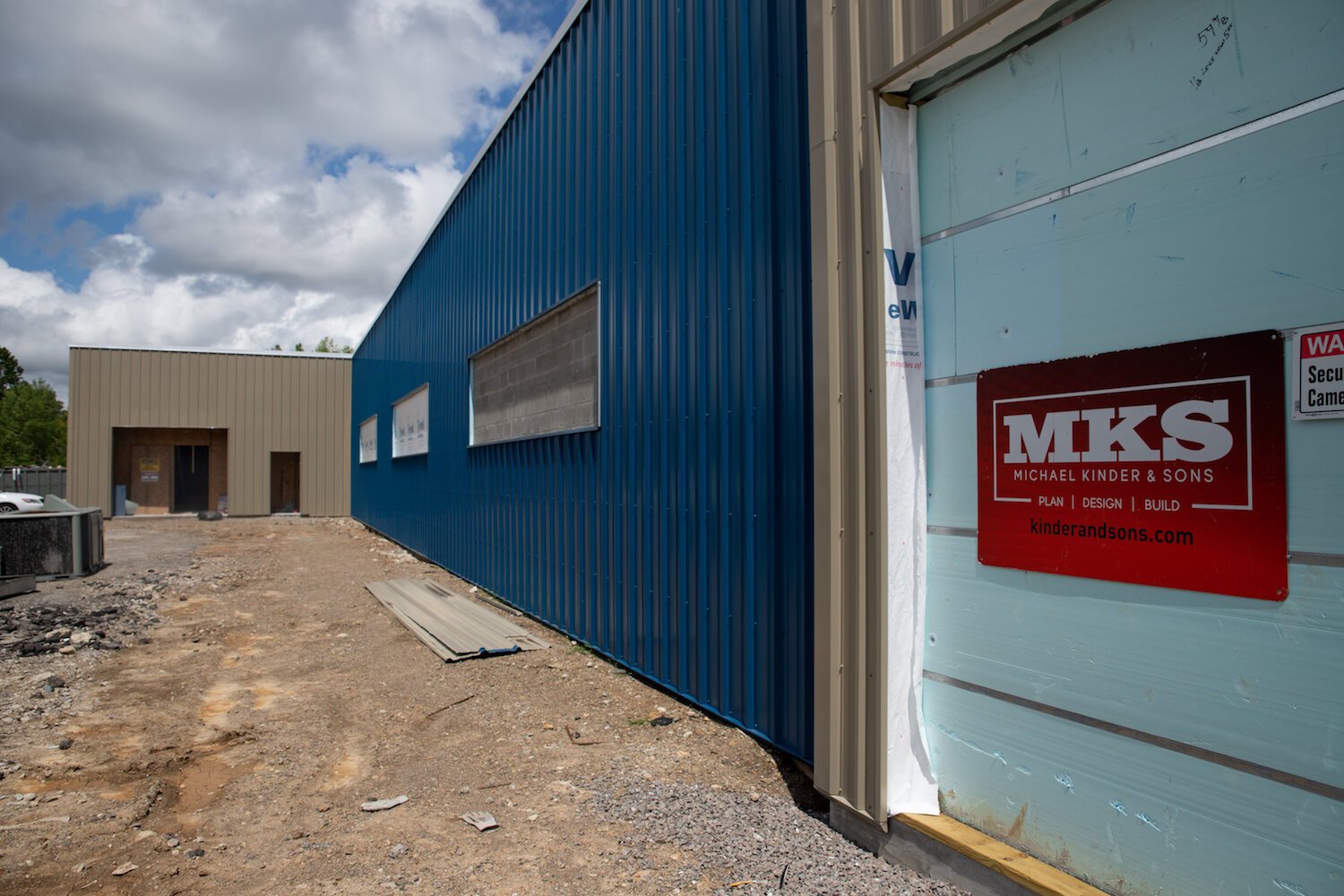
Fort Wayne Metals is now bringing the space back to life as a busy production facility to train new workers, and—more specifically—reach workforce demographics in the Southeast quadrant who might not be able to drive to its other locations.
The new building is strategically located near the bus stop at Tamera Senior Villas, making it easy to access by public transit.
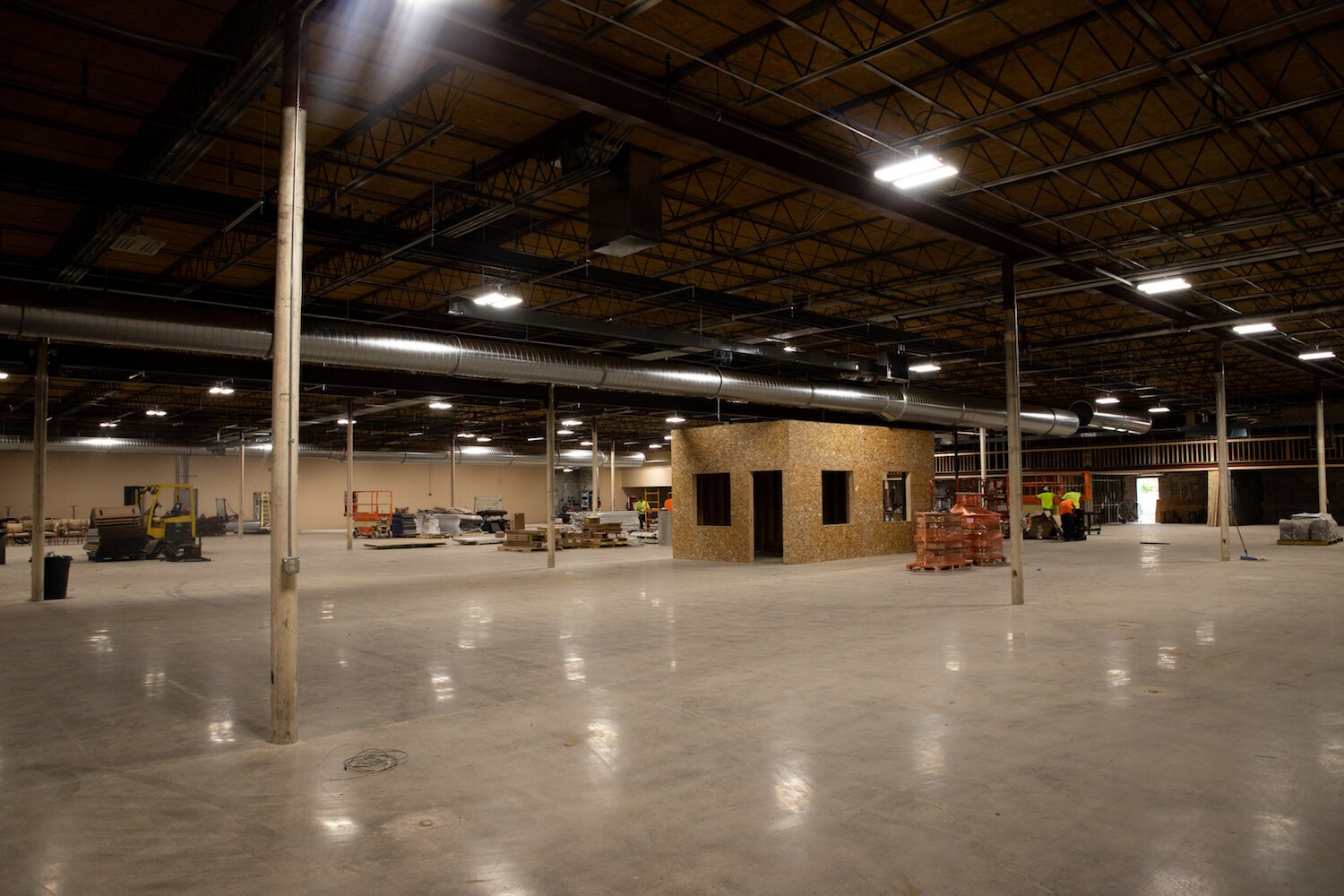
After spending years building up the civic and social economy of the Mount Vernon Park, Mondragon is excited to see long-vacant buildings coming back to life and creating ways to sustain the momentum. He hopes more companies and leaders in Fort Wayne follow Glaze’s example: Walking the streets to see Southeast for themselves, meeting residents, and considering how they, too, can invest in this growing community.
“I’m challenging our donors to go above and beyond giving finically,” Mondragon says. “I’m asking them: Why don’t you come here, and think about ways your company can invest in Southeast?”


